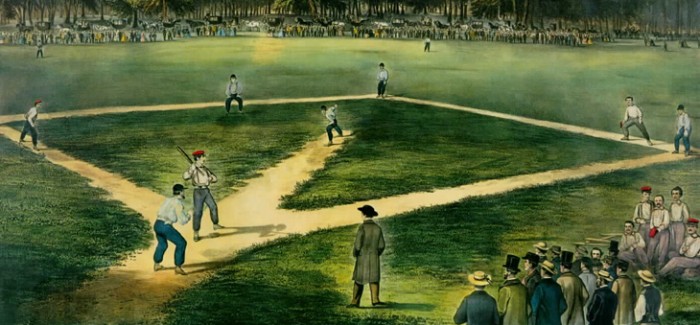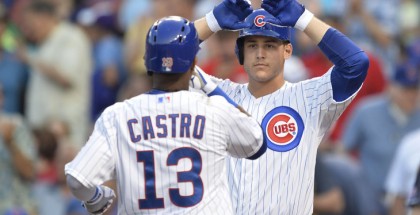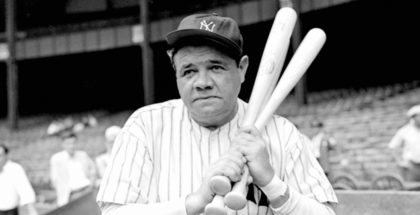The Nuances of Baseball
The official Major League Baseball Rules Book is a 125-page document that explains everything from how to play the game to how to keep statistics. Outside of that document there exists a set of unwritten rules that players, managers, and umpires use to govern the gray areas. This post season the legitimacy of some of these rules both written and unwritten have been called into question in regards to their legitimacy and their ability to affect the outcome of a game.
Situation #1: A week and a half ago in Game 4 of the ALCS, Red Sox second baseman, Stephen Drew, turned a double play and umpires applied what is known as the “neighborhood play.” This rule is in the spirit of the law, but definitely not the letter of the law, and it goes something like this: a player turning a double play must be in the vicinity of second base but doesn’t necessarily have to touch it when there is a sliding incoming runner. This is a routine oversight by umpires; however, in this case, umpires expanded “the neighborhood” to include the area in and around 2nd base, the stadium, the city of Detroit and some of Windsor, Canada. Now this play had no bearing on the outcome of the game (as the Tigers won 7-4), but liberal application of the neighborhood play has experts debating its legitimacy moving forward. Was he “close enough”? You be the judge.
Other Weird Unwritten Rules (suggestions of etiquette among players):
1) Don’t steal a base when you have a large lead or a large deficit.
2) Don’t bunt to break up a no hitter.
3) No yelling or intentional distractions while an infield is fielding a pop-up.
4) Don’t walk across the pitcher’s mound.
5) Don’t over-celebrate a home run.
Note: These do not come with a penalty enforced by umpires. You will usually just get hit by a pitch for violating them.
Situation #2: This past Saturday night with score tied 4-4, Red Sox catcher Jarrod Saltalamacchia fired a ball down to 3rd base to try throw out the Cardinals Allen Craig. The throw was wide of the bag pulling third baseman Will Middlebrooks off the bag as he dove to prevent the ball from going into left field. He failed, winding up on the ground and in front of the runner. Craig got up to run as the ball trickled away and stumbled over Middlebrooks. The third base umpire, Jim Joyce, immediately (and correctly) called Middlebrooks for “obstruction of a runner.” Craig continued to run home, and was thrown out at home plate by a few feet, but the home plate umpire acknowledging Jim Joyce’s obstruction call, signaled “safe” to the dismay of Boston players and fans. Many people wanted to argue about whether or not Middlebrooks intentionally impeded the runner or whether he could have gotten out of the way – both of which are inconsequential. Once the ball passed he was no longer trying to field it and thus was deemed in the way of the runner.
Written Rules that few people know or understand:
1) Obstruction/Interference – Obstruction is the act of a fielder impeding the runner from advancing to a base. The result of obstruction is the next base awarded to the runner. Interference is the act by which a runner impedes a fielder from properly fielding the ball. The result of interference is the runner is declared out.
2) Ground Rule Triple – If a player intentionally uses his hat to catch the ball a penalty of three bases shall ensue, meaning a triple for the batter.
3) Balk – By rule, when runners are on base and a pitcher winds up, he must set (come to a complete stop) before throwing to the plate or to a base in an effort to pick off a runner. All runners on base advance when a balk is committed.
If I were a Tigers or a Red Sox fan these plays would infuriate me at the time, but I would come to terms with the fact that America’s pastime is great because of these nuances. Minor rules that have major implications. Bizarre and quirky applications that leave players outraged and fans perplexed. Get used to it baseball fans. This is what you signed up for when you decided to follow a sport that plays a 162-game regular season, a sport that has written rules, unwritten rules, implied rules, and suggested rules all under the same roof (or dome, sometimes).
Confused? Good. What happens when a pitcher tries to pick off a runner, but the runner impedes the first baseman. The first baseman, in an attempt to keep the ball from getting away, but not knowing that he is going to be impeded flings his hat at the ball. The funny parts of the game are often what puts the fun in the game.







Submit a Comment